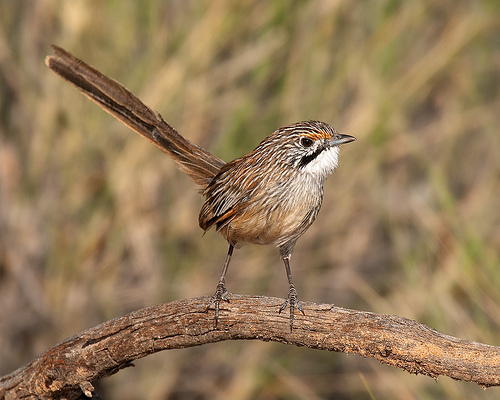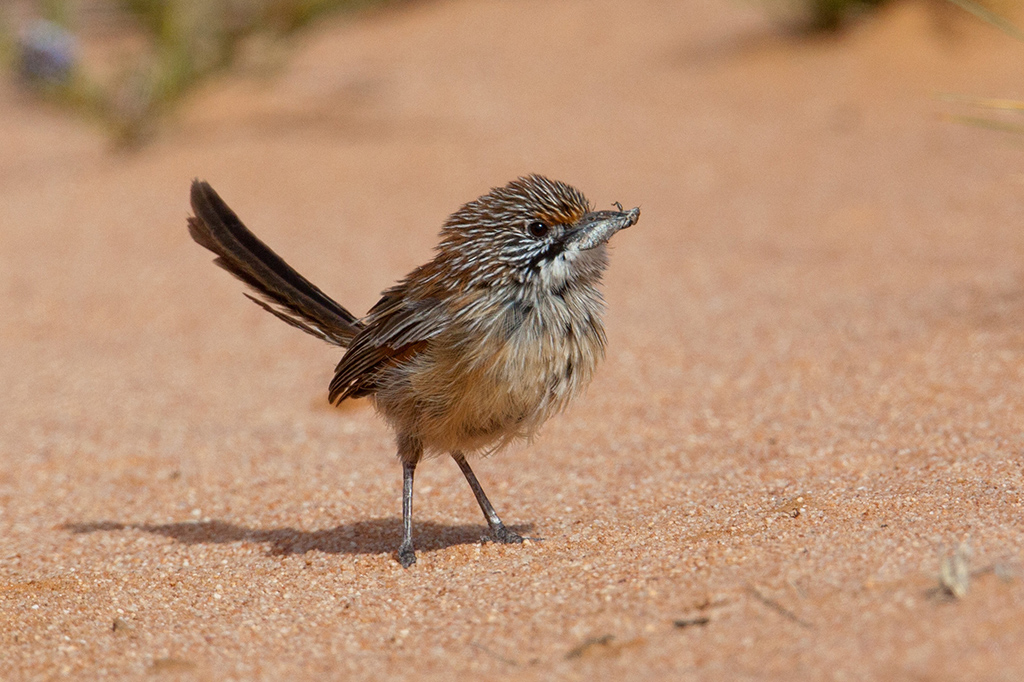
Amytornis striatus
TAXONOMY
Amytornis striatus Gould, 1840, Liverpool Plains, New South
Wales, Australia. Three subspecies.
OTHER COMMON NAMES
French: Amytis striй; German: Streifengrasschlьpfer; Spanish:
Ratona de la Hierba Rayada.
PHYSICAL CHARACTERISTICS
5.7–6.9 in (14.5–17.5 cm); male 0.56–0.78 oz (16–22 g). Sexes
similar but female has chestnut flanks.
DISTRIBUTION
Widely scattered populations across Australia. A. s. rowleyi is
confined to a small area of central Queensland, A. s. whitei is
found in Western Australia. A. s. striatus has at least four disjunct
populations from New South Wales to Western Australia.
HABITAT
Found on spinifex-covered sandplains and rocky hills, sometimes
with shrubby vegetation, of the arid interior.
BEHAVIOR
Poor fliers; hop about with tail cocked over open ground, or
with tail horizontal when moving through dense vegetation.
They are found singly or in small family groups. Melodious
song of trills and whistles.
FEEDING ECOLOGY AND DIET
Forage mostly on the ground, taking insects, particularly ants
and beetles, and seeds. They have been reported eating cactus
flowers, and foraging by moonlight.
REPRODUCTIVE BIOLOGY
Breeding biology is virtually unknown for wild birds. Clutch is
two or three red-spotted, white eggs. No helpers at the nest
have been reported.
CONSERVATION STATUS
Not threatened. Adversely affected by clearing for agriculture,
introduced herbivores, and overgrazing, as well as predation by
introduced cats and foxes, and by extensive fires.
SIGNIFICANCE TO HUMANS
None known.
Photo Gallery of - Striated grasswren




 Animalia Life
Animalia Life